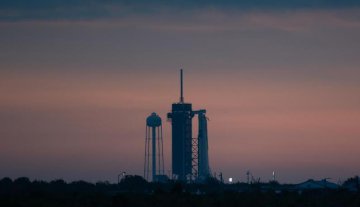The spacecraft lifted off on a SpaceX Falcon 9 rocket at 11:17 a.m. EST Sunday, from historic Launch Complex 39A at the Kennedy Space Center in Florida.
SpaceX confirmed the separation of Dragon from Falcon 9's second stage about 11 minutes after liftoff. The spacecraft is scheduled to autonomously dock to the space station on Monday, the first automated docking for a SpaceX cargo resupply mission.
Falcon 9's reusable first-stage booster has successfully landed on the "Of Course I still Love You" droneship, stationed in the Atlantic Ocean.
The mission, dubbed CRS-21, is the first flight of the updated cargo version of Dragon, which is capable of carrying about 20 percent more volume than the previous version of Dragon and has double the amount of powered locker cargo capability.
Packed inside cargo Dragon are critical science investigations, supplies, and equipment bound for the orbiting laboratory, including meteorite samples and microbes, 3D engineered heart tissues, and a tool being tested for quick and accurate blood analysis in microgravity.
The Dragon spacecraft is now designed for up to five flights to and from the space station, and the cargo version of the spacecraft can stay on station more than twice as long as the previous version of Dragon, according to SpaceX.
Cargo Dragon's arrival at the space station will mark the first time two Dragon spacecraft will be docked to the orbiting laboratory at the same time. The Crew Dragon spacecraft, named Resilience, that brought the Crew-1 astronauts has been docked since its arrival on Nov. 16.
The cargo Dragon spacecraft will remain attached to the space station for about one month, after which it will return to Earth with 5,200 pounds of research and return cargo, splashing down in the Atlantic Ocean.




















Latest comments